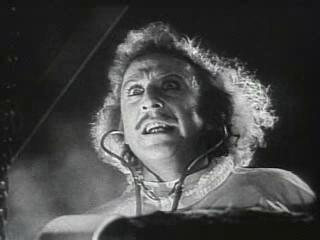As promised long ago, this is the post that will detail the way that I chose to do my hair for my wedding. The fabulous Amy from Arte Salon in Soho, NYC was my guide, and we practiced the style twice before I did it myself on my wedding day. I had to be thrifty and I also know that I’m one of the few people who can style my hair the way I like it, so I didn’t want to take the chance of having a hairstylist upstate try to make me look like a porcelain doll with fake-looking hair.
I should go into this saying that I wanted volume, and I wanted a slightly “undone” look to match my country wedding in the Catskills. It also matches who I am, and I firmly believed that I should look like a done-up version of myself on my wedding day. Not fussy and constricted. I even wore cowboy boots with my dress.
But I digress! Below are the steps and materials that I needed to do my ‘do.
Materials:
– $40 fake hair extensions
– Lots of bobby pins
– Hair adornment from BHLDN, purchased on Tradesy.com, my new-found BFF.
– Hair spray
– A borrowed $200 Mason Pearson brush
Method:
When you are manipulating your hair, it is best to work on second-day hair. You want it to be a little “dirty” because it will hold styling better than clean hair. I ended up washing my hair the morning of, but it probably would have been better if I hadn’t.
1) Tease out dry hair using the Mason Pearson brush, or another dense boar-bristle brush. Learn how to tease your hair correctly to minimize breakage. There will be breakage, so this isn’t something you’ll want to do often. You basically back-brush hair at the roots until it is very ratty and fluffed up, and then lightly skim the brush over the top of the hair to smooth down the exterior. The idea is to build volume, so you want to do it in the areas where you need the most bulk: on top of your head, around the crown, and on the sides. The benefits of a Mason Pearson is that they use about three different types of bristles and it works well to stimulate your scalp to distribute oils and make hair shinier and ultimately healthier. Note: Don’t ever blow-dry while using this brush because some of the rubber bristles will melt.
2) If you’re using clip-in extensions, put them in now, after you’ve teased the parts of your natural hair that you wanted to tease. Hair should be at its full volume. If you purchase real hair, you can curl it. If you get synthetic, you can’t. You also can’t tease synthetic because it won’t hold. I found this out a bit late, but was able to work it into my braid and blend in enough of my real hair to make it look natural.

Hard to see, but I made little triangles going up the back of my hair with groups of three interconnected bobby pins. They are stronger when working as a team!
3) Create an armature (shown here, third one down) at the back of your head using many criss-crossed bobby pins. This is similar to the way you’d do your hair in a French Twist. It’s basically just interconnecting them to make a support to hold up lots of hair in a way that’s more supportive than just using free-standing bobby pins scattered around. Then you will sweep other, loose hair over the armature and pin that into place to hide the armature.
4) Braid the hair that is left hanging. Loop the end instead of leaving a loose rat-tail look, or if you have real hair you can curl the end.
5) Take a final look and make sure nothing is sticking out anywhere that it shouldn’t be, use a curling iron to curl any loose tendrils, and place hair around your face the way you want to. If you have fine hair and choose to use a curling iron for loose pieces, those pieces will probably be straight by the end of the night. I should have just wet my loose pieces and let them air dry rather than try to curl them, but I wanted big, beautiful curls!
6) Add any hair pieces to your ‘do, and voila! Since I did a side braid, I put my piece on the side with the braid and tried to make that side of my head visible when I was coherent enough to think of it.
Ultimately I loved my unkempt, messy hair look mixed in with a few shiny, well-coiled and curled strands. The look is supposed to be un-fussy, slightly glamorous, and natural-looking. Oh, the irony!
How do you like it? What would you have done differently? Have you done something similar with your hair?


